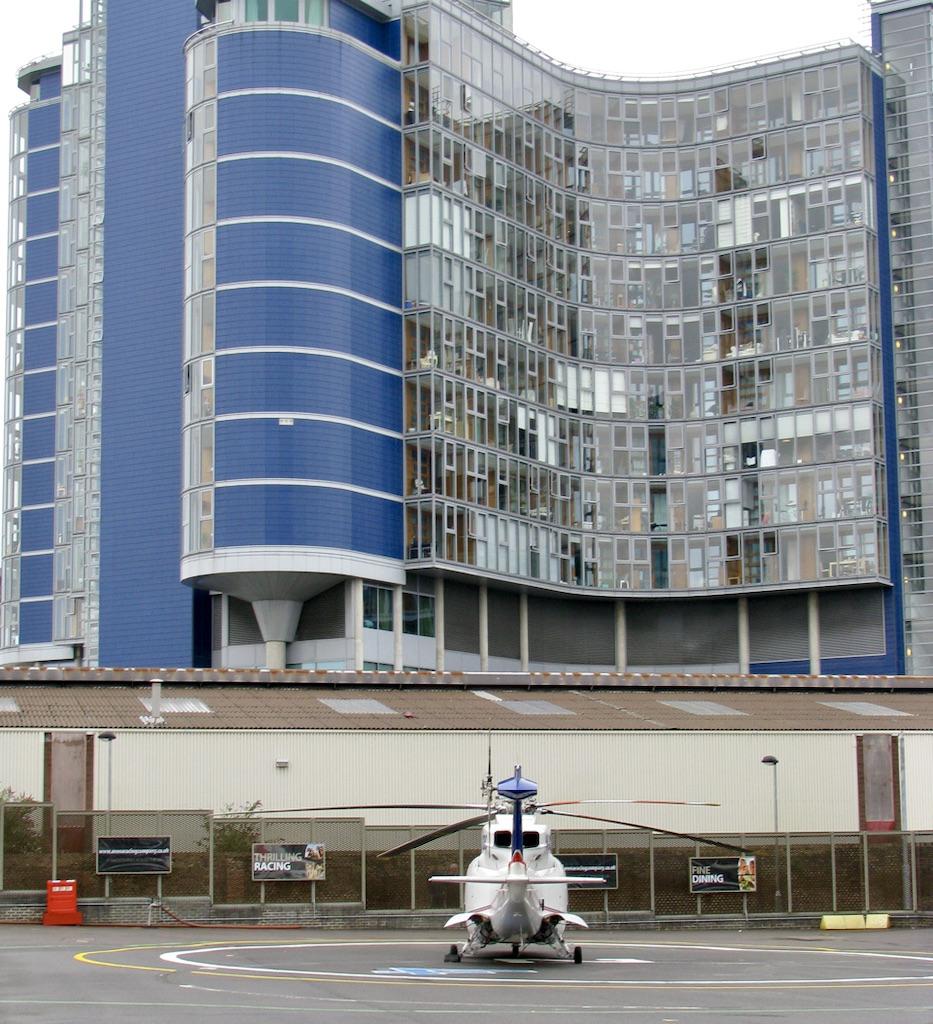
Thinking of putting a helipad on top of your building? It is a long arduous complex process.
There are considerable advantages to rooftop helipads. Security and privacy are important assets provided by a rooftop helipad, much more so than a ground-based helipad. Access to a rooftop helipad is comparatively easier to control through proper security methods than a ground-based helipad.
In today’s open society it is difficult for business moguls, sport stars and Hollywood’s elite to have a modicum of privacy. A rooftop helipad makes it much more difficult for the paparazzi to gawk and grab photos. Additionally, a roof-top helipad is less likely to have as many obstructions on its arrival and departure flight paths than a helipad buried in the urban landscape with towering buildings nearby. Ground-based helipads would also be more susceptible to flight path obstruction as nearby neighborhoods undergo future development.
The obvious disadvantages of a rooftop helipad begin with the cost and complexity. The structural integrity of the uppermost layers of the building will require a complete engineering analysis and possible strengthening. The disruption of major construction is considerable. For example, consider the complexity of hauling steel girders or concrete to the top of a tall building. If you attempt to do this in the day time, imagine the street grid lock created by the construction vehicles.
A helideck will require two separate entrances, which means a complete engineering analysis and structural reinforcement of the upper layers of your building. The upper deck will need to be specially designed to capture fuel spills. The electrical system will need a complete upgrade. Even the HVAC (heating, ventilation, air conditioning) system may need extensive modification. The ingestion of a helicopter’s exhaust fumes into the building’s ventilation system cause serious respiratory challenges for building occupants. Preliminary design of a helipad would need extensive evaluation of the prevailing winds and possible HVAC modification. All of this specialized construction work will significantly impact the everyday functions of your building.
This is just a hint of the multitude of safety and design issues with elevated landing pads in urban settings. If your executive team is contemplating a rooftop helipad, from the outset you should understand that this will turn into a multi-year project of significant complexity and cost. Before you dive into this temptation there are many aspects to consider. The following examples are important lessons to learn from.
Rooftop Firefighting
Even a simple fuel spill has the potential to quickly deteriorate into a threatening situation for the building occupants. Further adding to the risk of rooftop helipads is the difficulty of getting first responders to the scene quickly.
“No amount of conventional firefighting equipment will be adequate to give any real assurance that there will be no loss of life in a serious post-crash fire,” says Charles Bahme, Los Angeles Fire Department deputy fire chief. “It often happens so fast that it is impossible for fire equipment to be brought into action quickly enough to save the lives of the victims.”
Fire equipment requirements must conform with local fire codes. For obvious reasons, fire departments are greatly concerned about the storage of aviation fuels utilized for refueling on roof top locations. The firefighting equipment needs to be sufficient to control an incipient fire, protect the building and handle spills, leaks, or other minor emergencies that might arise.
The National Fire Protection Codes mandate a wide range of design and maintenance issues applicable to rooftop helipads. These include codes for portable fire extinguishers, aircraft fuel servicing, aircraft hangars and maintenance, aircraft rescue and firefighting foam equipment, heliports and aircraft accident response. The guidance contains provisions such as the pitch angle of the helipad for drainage to reduce the spread of fuel that might occur from a spillage in order to reduce fire and explosion as well as a fuel-water separating system.
The LAFD’s minimum fire safety requirements prescribe that two or more wet standpipes shall be provided and equipped with 1 ½-in. rubber lined fire hose not over 75 ft. in length. The hose shall be equipped with combination fog nozzles. Sufficient pressure shall be available to afford a good fog pattern, which in itself is a significant requirement to consider when delivering water to the upper elevations of a high rise.
Hose cabinets or racks shall be located near the separate exits. Standpipes shall be so located that all portions of the roof area shall be accessible to within 20 ft. of the nozzle when attached to not more than 75 ft. of hose. Two dry-powder-type fire extinguishers shall be provided. If desired, a CO2 extinguisher of equal rating may be substituted for one of the dry powder extinguishers. The rooftop shall have two conforming exits and they shall be remote from each other.
There is one positive aspect of rooftop helipads from a firefighting perspective. Rooftop access via helicopter can enable firefighters to get more quickly to top floors during skyscraper fires. Patrick Butler, LAFD assistant chief, published an op-ed in the Los Angeles Times on Oct. 4, 2014, outlining the positive outcomes for people trapped in high rise fires. Five people were rescued by helicopters from the top of the First Interstate Bank Building in 1988. During the 1980 MGM Grand Hotel fire in Las Vegas, more than 1,000 people were evacuated from the roof by military helicopters. Also in 1980, six helicopters saved people from the rooftop of the burning Dupont Plaza Hotel in Puerto Rico.
After the 9/11 terrorist attacks, LAFD conducted drills demonstrating that the city’s fleet of helicopters could evacuate as many as 300 people per hour. The department has protocols requiring its helicopters to respond to all reported high-rise fires with a crew of firefighters on board.
In Considerations For Rooftop Heliports, Part 2, we will consider detailed aviation requirements for helipad design.





